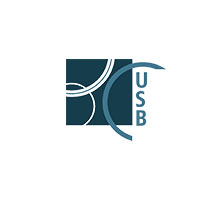Krause, Jonas David  ORCID: 0009-0008-5363-2235
(2024).
Magnetic-field-resilient transmons for topological quantum computation.
PhD thesis, Universität zu Köln.
ORCID: 0009-0008-5363-2235
(2024).
Magnetic-field-resilient transmons for topological quantum computation.
PhD thesis, Universität zu Köln.

|
PDF
Dissertation_Publication_Jonas_Krause.pdf - Published Version Download (52MB) |
Abstract
Topological quantum computation based on Majorana zero modes (MZMs) offers inherent fault tolerance for a discrete set of logical gate operations, which may help to reduce the overhead of quantum error correction in future quantum computing platforms. However, the unambiguous detection of MZMs proves to be notoriously difficult due to a complex interplay of superconductors and semiconductor or topolological-insulator materials with magnetic fields. Circuit QED (cQED) in turn offers well-established dispersive readout and control techniques that couple coherent resonator states containing many photons to single quanta in a superconducting circuit and provide quantum-non-demolition, single-shot measurements with high signal-to-noise ratio. The cQED platform is moreover very versatile and can accomodate any low-loss materials and nanostructures to form hybrid devices. Integrating topological-superconductor platforms that are predicted to host MZMs to superconducting circuits is therefore a promising route to hunting down the elusive Majorana fermions. In particular, the transmon circuit can couple to the fermion parity of a topological qubit based on MZMs. Transmons can resolve charge dynamics in the circuit with sub-microsecond resolution and their spectrum is modified significantly when MZMs couple via the transmon's Josephson junction (JJ). Moreover, the integration of topological qubits to transmon circuits can enable universal quantum computation with MZMs by complementing the discrete topologically protected gate operations with near-fermion-parity-protected gate operations. A challenge to overcome, however, is that the generation of MZMs typically requires the readout circuit to sustain relatively large magnetic fields. Transmons based on conventional Al/AlOx/Al JJs are usually operated in a setting that is well-shielded from magnetic fields, and prior to this work the use of unconventional JJs such as JJs based on Graphene or semiconductor nanowires has been put forward for magnetic-field resilience. The latter types of JJs typically suffer from poor coherence and low control over their fabrication, however. This thesis therefore investigates to what extent transmons based on Al/AlOx/Al JJs can serve for readout and control of future Majorana qubits. To this end, the magnetic-field dependence of spectrum and coherence times as well as the parity-switching time of aluminum transmons is measured. The measured devices are designed for enhanced magnetic field compatibility: Thin bottom and top aluminum layers of nominally 10nm and 18nm, respectively, give high critical fields, narrow leads to the JJ minimize vortex losses and the transmons are placed in a three-dimensional copper cavity resonator, which is unaffected even by strong magnetic fields. As a result, both single-JJ and SQUID transmons can be operated coherently in parallel magnetic fields approaching 1T with microsecond lifetimes over the entire measurable range. To preserve coherence, accurate in-plane alignment of the magnetic field is paramount. The magnetic-field-dependence of the energy spectrum is described by a combination of gap suppression and a Fraunhofer-like modulation of the junction's critical current, both of which lead to a decrease in the transmon's Josephson energy EJ. With decreasing EJ/EC-ratio, where EC is the transmon's charging energy, the transmons become more and more susceptible to charge noise. Also flux noise increases with magnetic field, likely due to vibrations of the sample with respect to the magnet. The parity-switching time t_p of a SQUID transmon is measured in parallel magnetic fields up to 0.41T, with a limited suitable range of EJ/EC-ratios and an instability at the top flux sweetspot of the SQUID limiting further measurements. Measurements of the temperature dependence of t_p at selected field values complement the data. Using a comprehensive model that consistently describes both the field and temperature dependence of t_p we demonstrate that the superconducting-gap asymmetry between top and bottom aluminum layer plays a crucial role in the observed non-monotonic behavior of t_p. Besides giving a deeper insight into the parity-switching mechanisms in conventional transmon qubits, the measurements presented in this thesis establish that Al/AlOx/Al JJs can be used in architectures for the parity-readout and manipulation of topological qubits based on MZMs. The long-term goal being the integration of MZMs to magnetic-field-resilient transmons then, transmons based on topological-insulator (TI) nanowire JJs are investigated in a parallel reseach effort. All TI-based transmon devices tested so far suffer from heavy microwave losses and do not achieve the strong coupling limit. Instead, the transmons act as a sink for resonator photons leading to a drastic reduction of the cavity Q-factor upon resonance via the inverse Purcell decay. This prevents unambiguous spectroscopic measurements of the transmon frequencies, let alone time-domain measurements of the transmon coherence times. Likely a soft induced gap in the TI allows for unproximitized resistive channels in parallel to the supercurrent-carrying channels. To mitigate and avoid the observed losses, alternative device designs are put forward that may profit from an in-situ fabricated interface between superconductor and TI or rely on a weak coupling of MZMs via a nearby Al/AlOx/Al JJ.
| Item Type: | Thesis (PhD thesis) | ||||||||||||||||||||||||||||||||||||||||||||||||
| Creators: |
|
||||||||||||||||||||||||||||||||||||||||||||||||
| Contributors: |
|
||||||||||||||||||||||||||||||||||||||||||||||||
| URN: | urn:nbn:de:hbz:38-750415 | ||||||||||||||||||||||||||||||||||||||||||||||||
| Date: | 2024 | ||||||||||||||||||||||||||||||||||||||||||||||||
| Language: | English | ||||||||||||||||||||||||||||||||||||||||||||||||
| Faculty: | Faculty of Mathematics and Natural Sciences | ||||||||||||||||||||||||||||||||||||||||||||||||
| Divisions: | Faculty of Mathematics and Natural Sciences > Department of Physics > Institute of Physics II | ||||||||||||||||||||||||||||||||||||||||||||||||
| Subjects: | Physics Technology (Applied sciences) |
||||||||||||||||||||||||||||||||||||||||||||||||
| Uncontrolled Keywords: |
|
||||||||||||||||||||||||||||||||||||||||||||||||
| Date of oral exam: | 10 September 2024 | ||||||||||||||||||||||||||||||||||||||||||||||||
| Referee: |
|
||||||||||||||||||||||||||||||||||||||||||||||||
| Refereed: | Yes | ||||||||||||||||||||||||||||||||||||||||||||||||
| URI: | http://kups.ub.uni-koeln.de/id/eprint/75041 |
Downloads
Downloads per month over past year
Export
Actions (login required)
 |
View Item |
